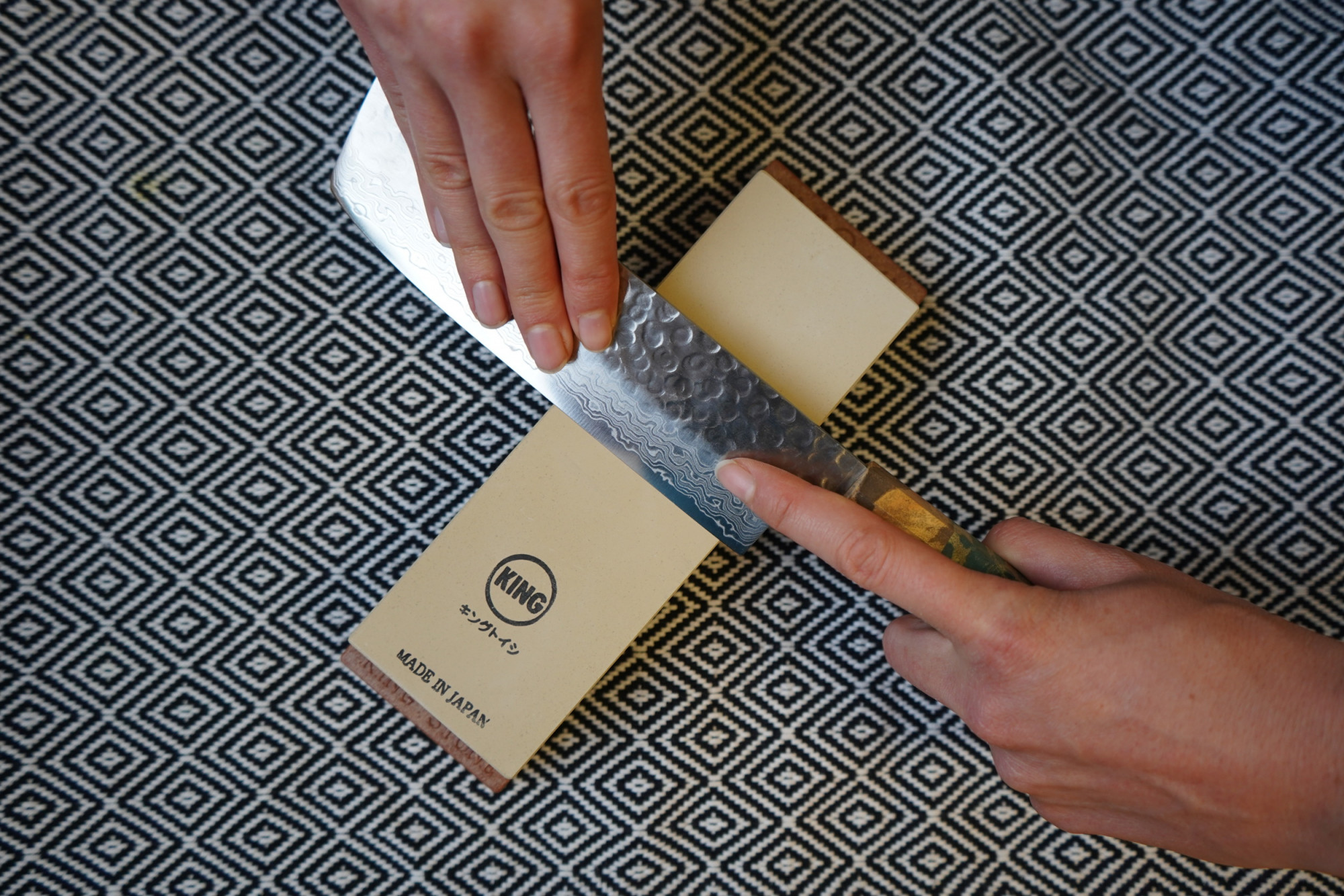Product Description
The King HT-65 PRO 1000/6000
The 800 grit King whetstone is a sharpening stone that offers a medium level of abrasiveness. It is commonly used in the process of sharpening blades, knives, and other cutting tools. The term “800 grit” refers to the size of the abrasive particles embedded in the stone’s surface.
With its medium grit, the 800 grit King whetstone is versatile and suitable for various sharpening tasks. It effectively removes moderate levels of material from the blade, helping to restore the cutting edge to its optimal sharpness. This grit level is often used after initial coarse sharpening to refine the edge further or as a starting point for moderately dull blades.
Using the 800 grit King whetstone involves wetting the stone with water and then running the blade across its surface at an appropriate angle, applying consistent pressure. The sharpening process gradually removes small amounts of metal from the blade, creating a new, sharper edge. It is important to maintain a steady and controlled motion while sharpening to ensure consistent results.
The 800 grit King whetstone provides a balance between material removal and edge refinement. It is an essential tool for individuals who regularly maintain their cutting tools and desire a sharp and efficient cutting edge. By regularly sharpening with this whetstone, you can extend the lifespan and performance of your blades, allowing for cleaner cuts and enhanced cutting precision.
Note that the 800 grit King whetstone is just one option among various grit levels available. Depending on the condition of the blade and the desired sharpness, you may need to use additional finer grit stones to achieve a polished and razor-sharp edge.
Japanese Whetstones
Unlike other synthetic sharpening stones which consist of a single abrading agent, these Japanese water stones consist of aluminium oxide, carbide and nitride particles fused together. This blend is then mixed with a clay like bonder and baked at high temperatures to form the sharpening stone. The resultant stone is soft but sharpens very quickly. The soft bonding clay allows the abrasive particles to release very easily when the stone is soaked in water. This gives the user a constant supply of fresh cutting surfaces with which to grind, sharpen and hone their tools.
Now favoured by many professionals and sporadic users over the natural stones, when you purchase a synthetic Japanese sharpening stone you are guaranteed a stone with a uniform grit size that will produce consistent, high quality results when sharpening and will not vary in quality from stone to stone.
Made in Japan















